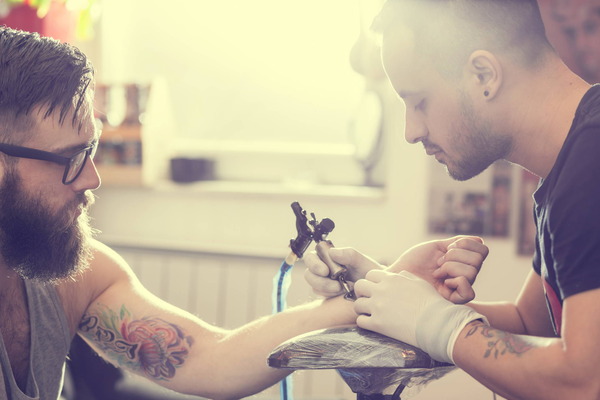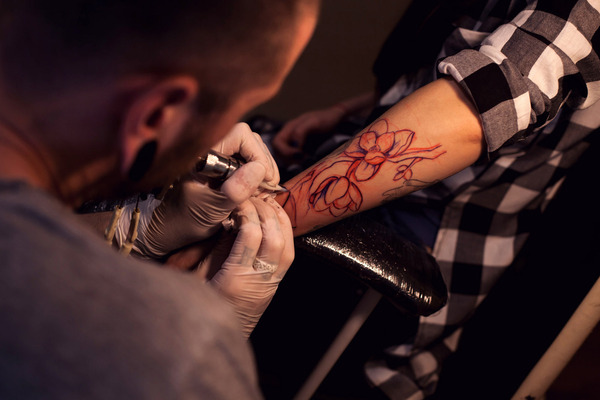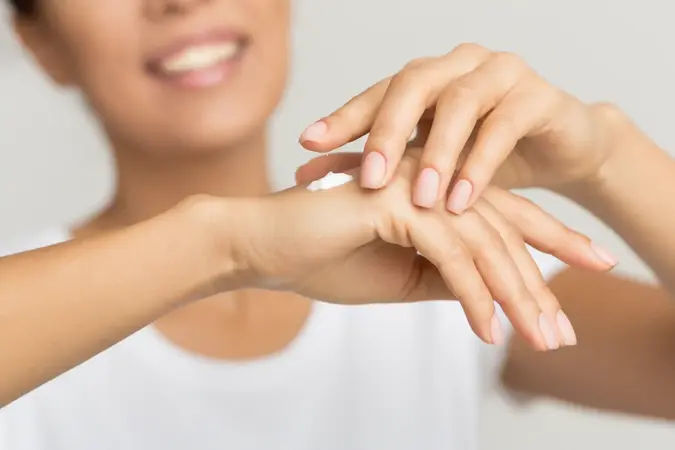
Ultimate Tattoo Pain Guide: Least to Most Painful Body Parts for Tattoos
When considering where to get a tattoo, understanding which body parts rank as the most and least painful can significantly enhance the tattooing experience. Everyone’s pain tolerance differs, and so does the pain felt during the process, largely influenced by the artist’s technique and the specific placement of the tattoo.

Having this knowledge beforehand allows individuals to prepare for a more enjoyable tattoo session. As someone who has experienced this firsthand, I can attest that the right preparation and knowledge about pain points can transform the tattooing journey.
Factors Affecting Your Level of Tattoo Pain-The Answer
[su_note note_color=”#D3D3D3″ radius=”6″]The pain of getting a tattoo varies based on its location, your pain tolerance, and the session’s duration. Areas such as the ribs, spine, and inner thighs tend to be more painful. Proper planning can help reduce discomfort.[/su_note]
Factors Affecting Your Level of Tattoo Pain
Understanding the factors that influence tattoo pain can help you plan your session better. The location of the tattoo, your pain tolerance, and the length of the session all affect the level of discomfort. Areas like the ribs, spine, and inner thighs are particularly painful. Anticipate and plan accordingly to minimize discomfort.
a. Body Part
The location of your tattoo is crucial, as it affects the pain level significantly. Areas with thinner skin, more nerve endings, and closer proximity to bones are more painful. Understanding these factors helps you anticipate discomfort better.
b. Pain Tolerance
Individual pain tolerance varies widely, meaning what is uncomfortable for one person might be barely noticeable for another. Your personal pain threshold will significantly impact your experience during a tattoo session.
c. Tattoo Size and Complexity
Larger tattoos with intricate designs can require more time and effort from the artist, potentially increasing the pain level. Detailed work involving shading and coloring can also intensify the discomfort.
d. Artist Technique
The skill and technique of the tattoo artist can greatly influence the amount of pain you feel during the session. An experienced artist with a light hand and smooth, consistent technique will cause less discomfort compared to one with a heavy hand or inconsistent technique.
e. Hydration and Nutrition
Your physical well-being can greatly impact your ability to tolerate pain during a tattooing session. Staying well-hydrated and well-nourished before your appointment can help minimize discomfort and promote an easier experience.
f. Type of Tattoo
Different kinds and styles of tattoos can change the discomfort level. For example, bold, solid lines may hurt more than dot work or stick-and-poke tattoo styles. Having a talented artist who can ink your preferred style is the best way to manage discomfort during your tattooing session.
Body Parts Ranked by Tattoo Pain Level
This section will rank various body parts by their relative pain levels during tattooing, from most painful to least painful. Remember, individual pain tolerance can vary, so these rankings should be taken as a general guide.
a. Most Painful Areas
1.Ribcage
The rib cage has thin skin, little muscle, and many nerve endings, making it one of the most painful areas to get a tattoo.
2.Feet and Ankles:
The feet and ankles have many bones, tendons, and nerve endings close to the surface, making them particularly painful areas for tattoos.
3.Hands and Fingers:
Similar to the feet, the hands and fingers have many bones, tendons, and nerve endings, resulting in increased pain during tattooing. Knuckles can be especially painful! Luckily, the amount of time spent tattooing this area is minimal, so the pain experienced is brief.
4.Spine:
The spine is a sensitive area due to the proximity of the spinal cord and nerve endings. Tattooing directly over the vertebrae can be especially painful.
5.Knees and Elbows:
These areas have thin skin and little padding between the skin and the underlying bones, making them more painful locations for tattoos.
6.Armpits and Groin:
These areas have a high concentration of nerve endings and lymph nodes, leading to increased pain during tattooing.
7.Neck and Throat:
The skin in these areas is thin and sensitive, with many nerve endings and blood vessels close to the surface, making them more painful for tattooing.
b. Moderately Painful Areas
1.Chest:
While the chest is generally less painful than the ribcage, it can still be a sensitive area due to the thin skin and proximity to the sternum and collarbones.
2.Stomach:
The stomach can be a moderately painful area for tattoos, particularly around the navel and the sides of the abdomen.
3.Lower Back:
The lower back is a relatively sensitive area due to the proximity of the spine and nerves, but it can be less painful than the spine itself, especially in areas with more muscle padding.
4.Buttocks:
The buttocks have a significant amount of muscle and fatty tissue, providing some cushioning. This can still be a tender area depending on which part of the buttocks you are tattooing.
5.Calves:
The calves have a fair amount of muscle and padding, making them a relatively less painful area for tattoos.
c. Least Painful Areas
1.Upper Arms:
The upper arms, particularly the outer part, have more muscle and padding between the skin and the underlying bone, making them one of the least painful areas for tattoos.
2.Shoulders:
The shoulders have a good amount of muscle and padding, providing some cushioning and making them a less painful area for tattooing.
3.Wrists and Forearms:
These areas have a moderate amount of nerve endings and blood vessels, making them occasionally painful locations for tattoos. However, the pain in these areas can be more manageable than in areas with thinner skin or closer proximity to bones.
4.Thighs
The thighs are relatively less painful areas for tattoos, with the inner thigh being more sensitive than the outer thigh due to the increased number of nerve endings and thinner skin.
Suggestions for Alleviating Tattoo Pain During Your Procedure
To alleviate tattoo pain during your procedure, try these strategies to help minimize discomfort and improve your overall experience.
- Choose the right artist by selecting an experienced tattoo artist with a gentle touch and a good reputation for minimizing pain. This can make a significant difference in your comfort level.
- Communicate with your artist and discuss your concerns about pain before the session. They might suggest alternative placement options or techniques to manage discomfort.
- Stay hydrated and nourished with proper hydration and nutrition before your tattoo session to improve your pain tolerance and promote a comfortable experience.
- Get adequate rest and ensure a good night’s sleep before your tattoo appointment, as fatigue can negatively impact your ability to tolerate pain.
- Consider using numbing creams to reduce pain during the tattooing process. Always consult your tattoo artist about numbing products to avoid any interference with the tattoo ink or healing process.
- Practice relaxation techniques like deep breathing or meditation to manage pain during the tattooing process.
- Bring a distraction, such as a friend, music, or a book, to help distract you from the pain during your tattoo session.
Preparing for Your Tattoo Session: Tips for Minimizing Pain
Before getting a tattoo, prepare yourself mentally and physically for the experience. Here are some tips to help manage pain during the tattooing process.
- Choose a comfortable environment by opting for a tattoo studio with a relaxing atmosphere and comfortable seating to make you feel at ease and better manage any pain that arises during the session.
- Wear appropriate clothing; select loose, comfortable clothing that allows easy access to the area being tattooed. Avoid tight, restrictive clothing as it can exacerbate pain and make it challenging to sit still during the session.
- Avoid alcohol and drugs as they can thin your blood, making the tattooing process more painful and increasing the risk of complications. Stay sober before and during your tattoo appointment.
- Discuss pain management options with your artist before the session. Talk to your tattoo artist about pain management strategies; they may recommend over-the-counter pain relievers, numbing creams, or other techniques to help minimize discomfort.
- Hydrate before your appointment to take better care of your skin and body, minimizing pain and discomfort during your tattoo session. Hydration is important for your skin’s comfort during tattooing.
Proper Aftercare Practices to Help Reduce Tattoo Pain
Proper aftercare is crucial for reducing pain and ensuring a smooth healing process. Here are some tips for managing pain during the tattoo healing period.
- Keep your tattoo clean and moisturized by gently washing with mild, fragrance-free soap and water, then applying a thin layer of unscented moisturizer to keep the skin hydrated and promote healing.
- Avoid using alcohol or hydrogen peroxide as they can be harsh and cause increased pain. Avoid direct sunlight to prevent excessive sun exposure that can cause pain and slow the healing process, damaging the tattoo and making it appear blurry or faded. Keep it covered or apply high-SPF sunscreen to protect it from harmful UV rays.
- Avoid soaking the tattoo by not swimming or immersing it in water for extended periods, as this can cause increased pain and slow healing; stick to brief showers and keep the area clean and dry.
- Don’t scratch or pick at the tattoo, even if it feels itchy or forms a scab while it heals; resist the urge to avoid infection and scarring.
Pain Management Techniques for Your Future Tattoos
If you’ve experienced significant pain during a previous tattoo session, consider employing these tattoo pain management techniques for your future tattoos.
- Start with gradual exposure if you’re new to tattoos or have low pain tolerance. Consider starting with smaller, less painful tattoos before moving to more extensive, more painful designs.
- Break up the session if you’re planning a large, intricate tattoo by breaking it into multiple shorter appointments. This can help make the pain manageable and give your body time to recover between sessions.
- Opt for a less painful location if you’re particularly sensitive to pain. Consider choosing areas with more padding, like the upper arms or buttocks, as they tend to be less painful than areas with thinner skin or closer proximity to bones.
- Practice deep breathing and relaxation techniques like visualization to calm your mind and reduce the perception of pain during your tattoo session.
Frequently Asked Question
What is tattoo pain comparable to?
Tattoo artist JoJo Roman compares the sensation of getting a tattoo to the feeling of a constant cat scratch (all my cat people out there know what she means). Other people say getting a tattoo feels like someone is continually scratching a hot needle across your skin—because that’s kinda what’s happening


